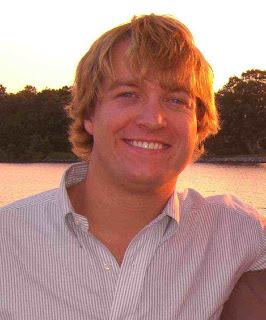The next morning we woke up early for a day packed with sightseeing. The first stop was Mani Bhavan, the Gandhi's home base in Bombay from 1917 to 1934. After Gandhi's death, the home was converted into a museum containing his photos, letters and books. Shown below is the humble room where he spent much of his time.
From Mani Bavan, we walked south to Chowpatti Beach. Hindus flock to the beach each year for the ten day Ganesh Chaturthi celebration when they immerse idols of Ganesha in the Arabian sea. Many of the buildings along the beach are leftover from the British colonial era - they are often dilapidated but still beautiful.
Occasionally we would walk by something and I would think "this looks just like Hong Kong," or "this is a modern city just like any other" then I would see something like this and remember what makes Bombay unique.
Pictured below: an ox card parallel parked in downtown Bombay
Sadly most of the vendors were closed as it was Sunday so we decided to come back the next day and head to the waterfront in the meanwhile. The most prominent landmark in Bombay's harbor is the Gateway to India, a 26 meter tall basalt archway built to commemorate King George's visit in 1911. Unfortunately the arch is currently under construction. The adjacent Taj Mahal Palace hotel is a prominent landmark as well. The hotel could easily be confused with a colonial era government building but was actually built by an Indian industrialist after he was refused admission into a "whites only" hotel. We walked north from the arch to the Churchgate area, passing by Oval Maiden along the way. The park is one of the few places in Bombay where people can gather to play cricket. Unfortunately there is not enough space for everyone to play so many games overlap with wickets from different games less than ten meters apart.
Finally, we walked northwest passing by Flora Fountain to what is perhaps Bombay's finest monument to British imperialism, Victoria Terminus. Though most people still refer to the train station as Victoria Terminus or simply VT, its name has formally been changed to Chhatrapati Shivaji Terminus in accordance with the controversial renaming policy. The train station, built in 1888, is so large that it defies capture in one single photograph. The design, however, is so intricate that one single photograph could not do justice to the building's Victorian Gothic style. Hopefully the two following two photos will give a sense of buildings scale and rich complexity.
Having walked all over the city, we decided to take a taxi back to our hotel in Colaba where we both promptly collapsed in bed, exhausted from our day of rigorous sightseeing.

The next morning we headed back to Victoria Terminus where we spent a frustratingly long time waiting in line for train tickets. Fortunately we were able to get the tickets we needed and managed to make some friends along the way. We spent the remainder of the day exploring Bombay's now bustling fruit, spice, textile, jewelry, and poultry markets which all happened to be right next to each other. Along the way, we stopped to try sweet paan. The local specialty is made of coconut, Indian spices and a marachismo cherry wrapped in a betel leaf.

The next morning we took an hour long ferry ride out to Elephanta Island, one of many small islands in the Bombay harbor. The island, while still wrapped in a haze of pollution, seems far away from the hustle and bustle of Bombay. The most prominent attraction, and really the only reason anyone visits the island, is a series of caves containing Buddhist statues.

The caves, thought to date as far back as 890AD, were entirely man made and cover an area of 60,000 sq ft. Unfortunately the lighting was very poor and I didn't have a tripod so if you're interested in more photos, please check out the wikipedia entry.

That evening we left Bombay headed for Ajanta, a more elaborate but less famous group of cave carvings 300km west of the city.
Of course, I couldn't post about Bombay without touching on Bollywood. The following link is a song and dance routine from a recent movie, Om Shanti Om. The song, Deewangi Deewangi, is still wildly popular a year on and almost inescapable.
http://youtube.com/watch?v=ulvHS4ye2Ps









2 comments:
Matt, that bar Leopold's that you went to in Mumbai is the bar that all the main character's in the book Shantaram meet in....I thought that was pretty cool. It's probably my favorite book, and I highly reccommend it. It's about India in the 1980s...very good!
I hope you guys are having an awesome time!
Matt,
Great post. I love how you managed to capture so few people in your photos. It'd make you think bombay/mumbai was like downtown Evanston!
Hope things are well.
Post a Comment